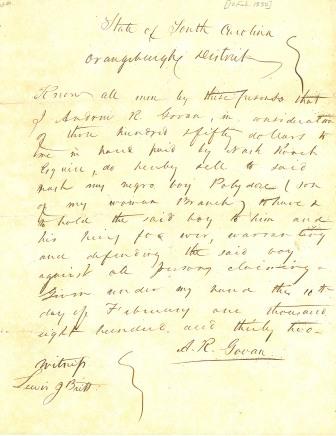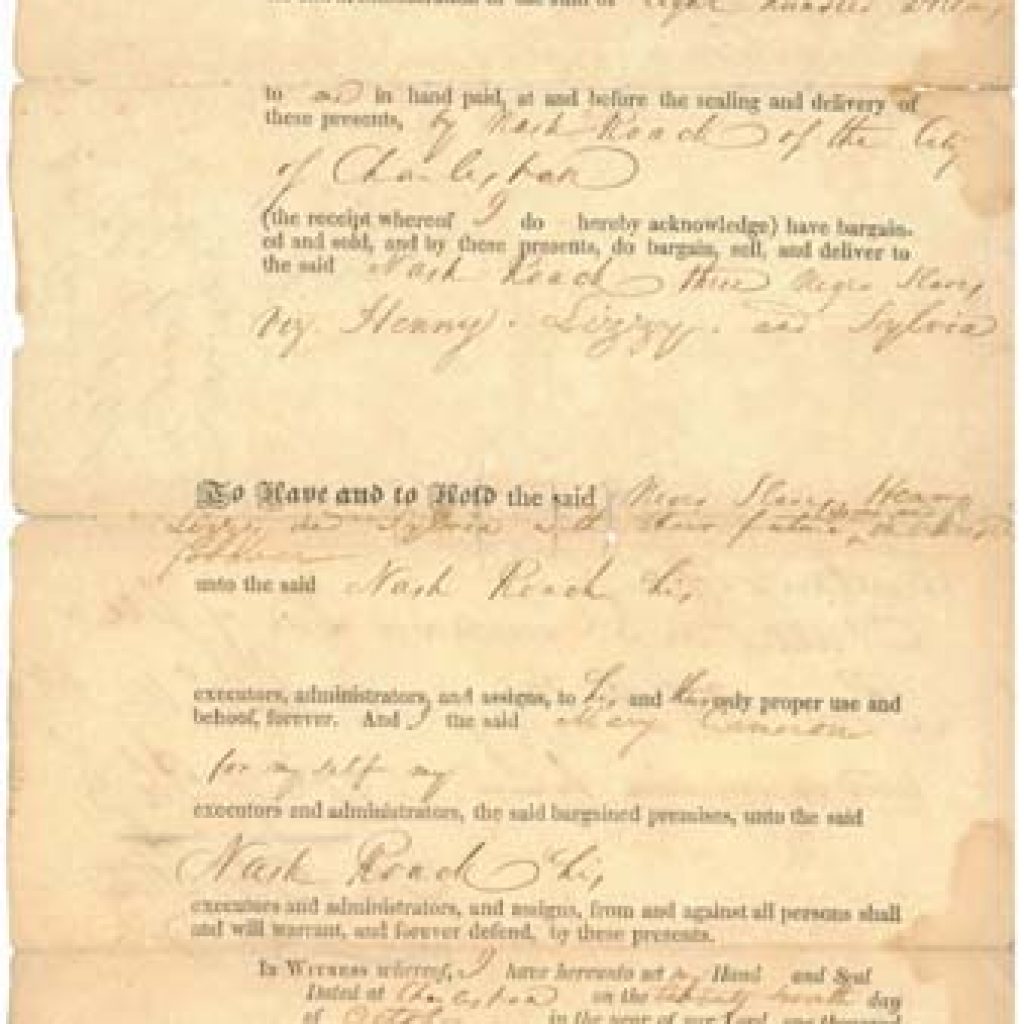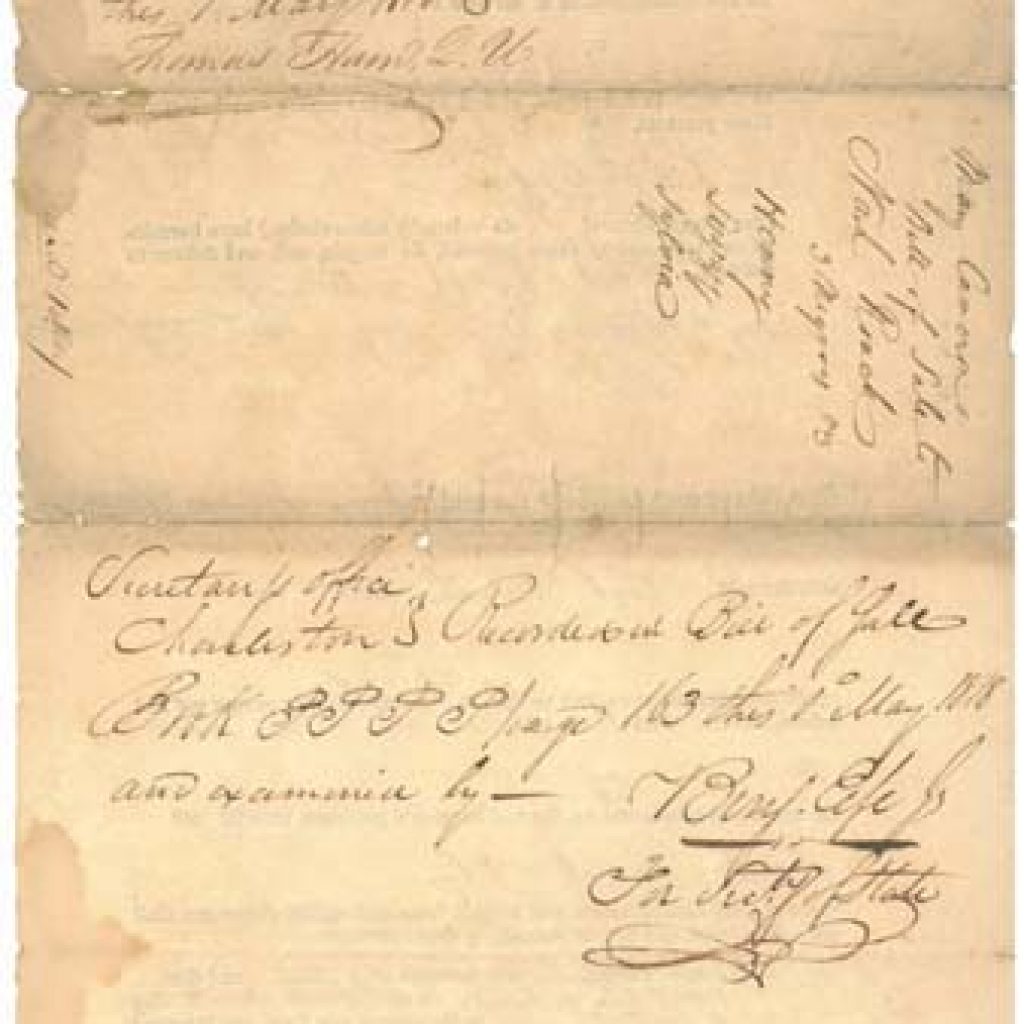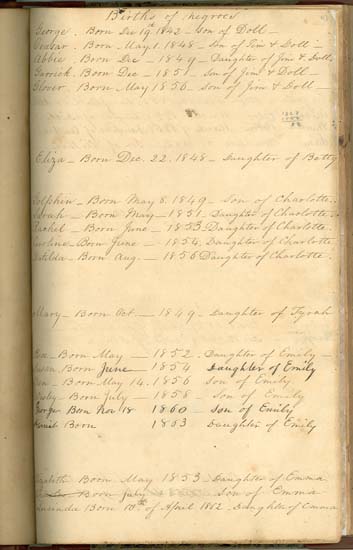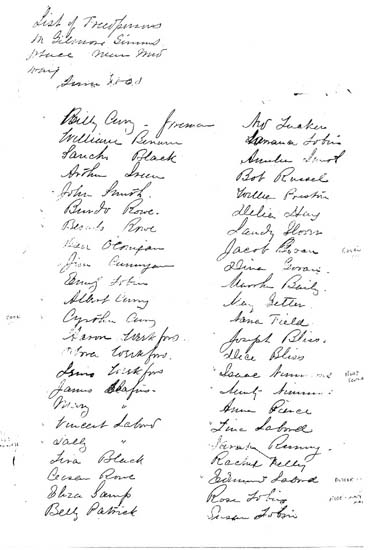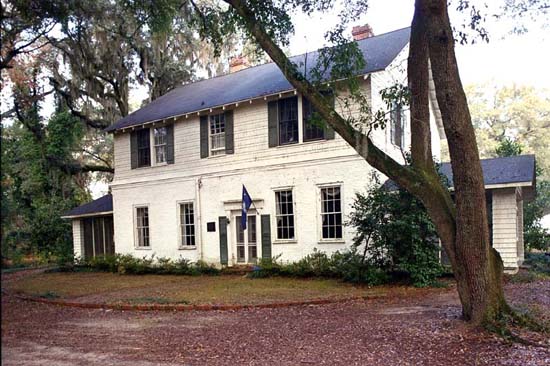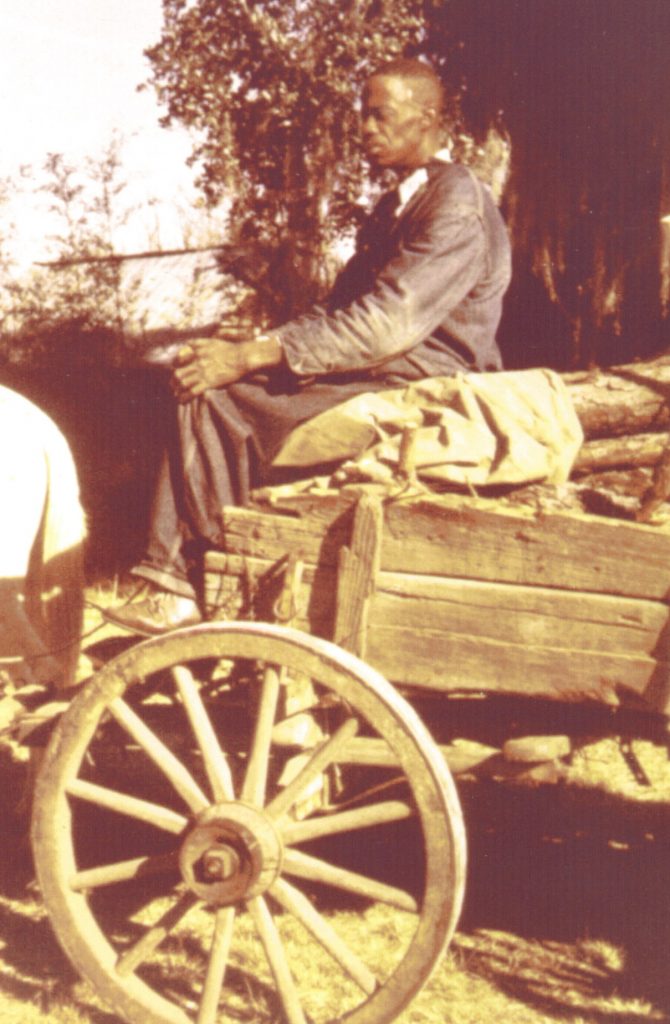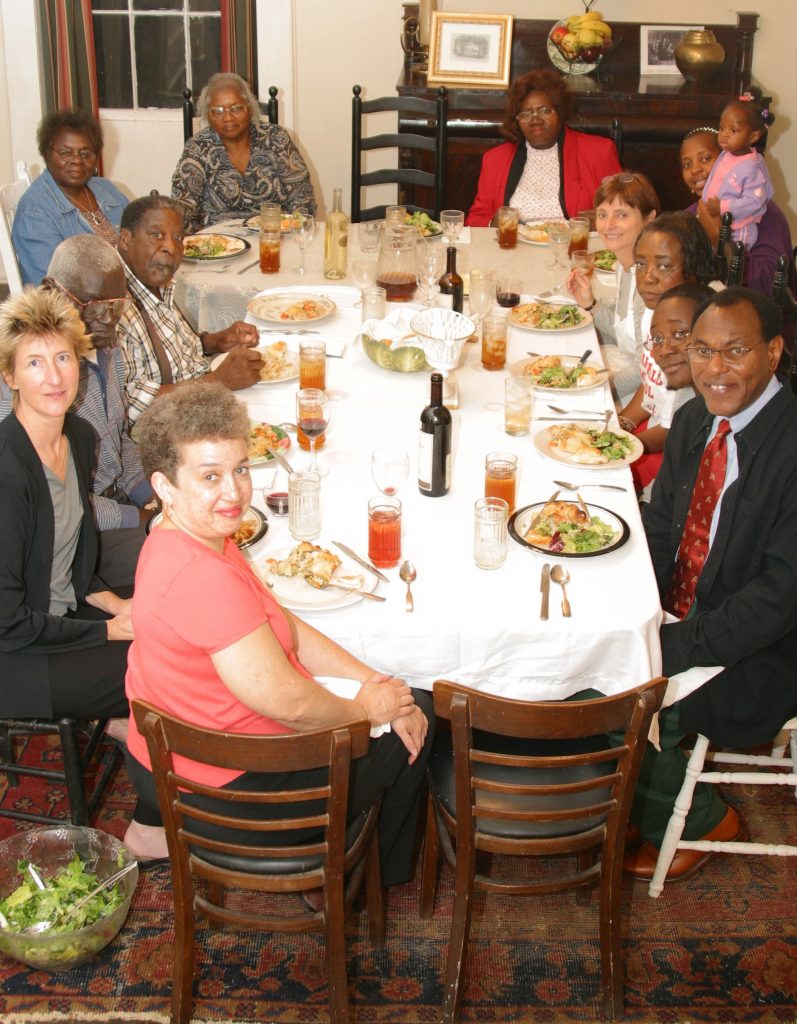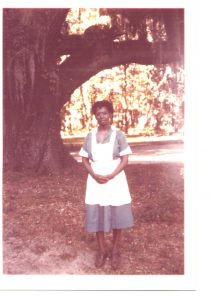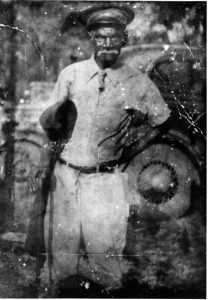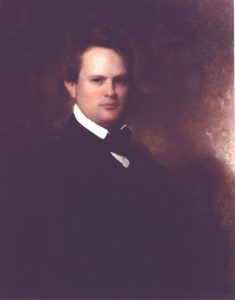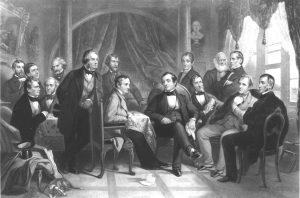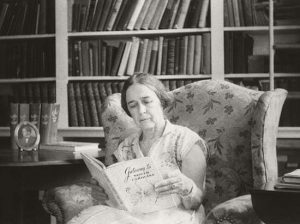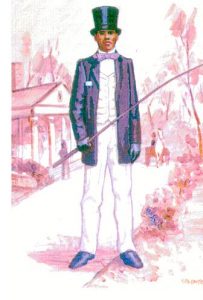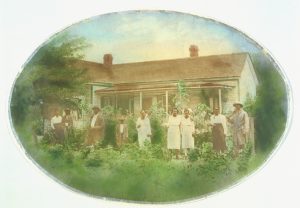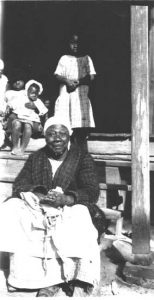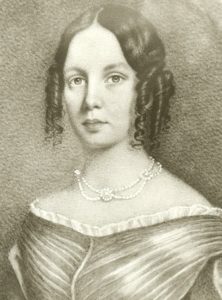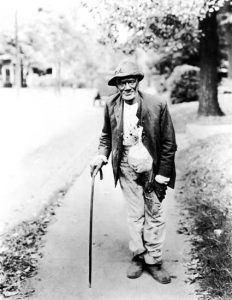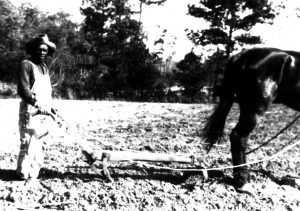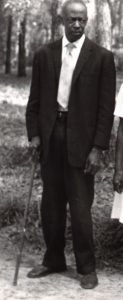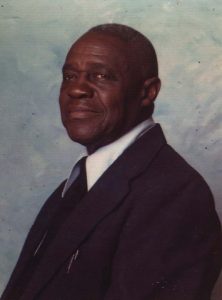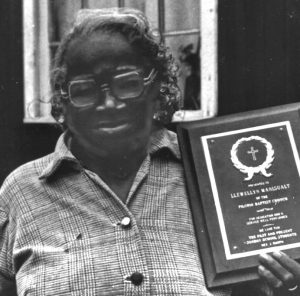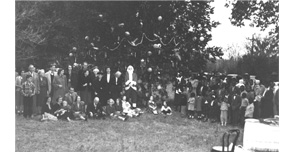
Woodlands families reunion, 1951
Shared History honors the centuries-old connection between the black and white families of Woodlands Plantation whose relationship has survived slavery and its aftermath. We celebrate the continuing reconstruction of our connection through acknowledging and accepting the past by maintaining contact through our website and emails, gatherings and reunions, and through updates about the Woodlands Families Scholarship Fund.
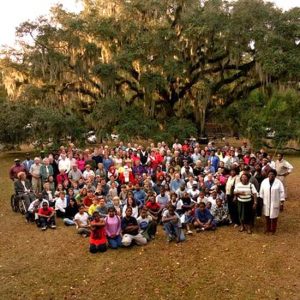
Woodlands families 50th Anniversary Gathering
Midway, SC | November 24, 2001
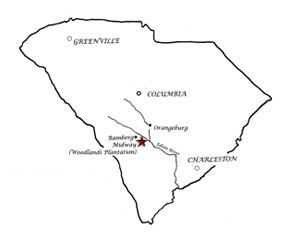
Location of Woodlands
Listed below are some of the surnames of our contemporary families who can trace a connection to Woodlands Plantation through ancestors who have been identified through oral history and document research as living on the property at the time of the Civil War.
| Antley Curry Glover Govan Kearse Laboard Manigault Nimmons Oliphant Orr Ramsey |
Reed Roach Rowe (white) Rowe (black) Rumph Simms Singleton Smalls Thomas Williams Wright |
Please note that within the text of many of the families’ linked pages above, there are references to information provided by author and historian Mary C. Simms Oliphant, a granddaughter of William Gilmore Simms. In her work on The Letters of William Gilmore Simms, she collected information about some of the African American families from Llewellyn “Mudd” Manigault, the granddaughter of Jim Rumph, which she used in writing sections of the six volumes. Mrs. Manigault was considered the historian of the plantation families and her community.
Pilgrim Baptist Church
The historic Pilgrim Baptist Church was founded in the Midway community of Bamberg, South Carolina in 1883 by Deacon Bill Simpson. It originated as a bush arbor by the population of African Americans who were enslaved on the plantations in the surrounding community including Woodlands. Many of its current members are descended from these families and are featured in Shared History. In 1926, a board-structured building was built. In 1958, the third church was built. The cornerstone reveals the following officers: Deacon Frank Richvine, Chairman, Deacon James Rumph, Deacon Dave Thomas, Deacon Willie Dickerson, Deacon John Varn, Deacon Willie Glover, and honorary member, Tom Toomer. Wilbert Davis is currently Pastor. Pilgrim Baptist Church has served as a nexus for community building throughout its existence.
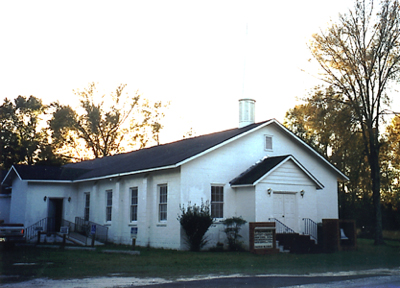
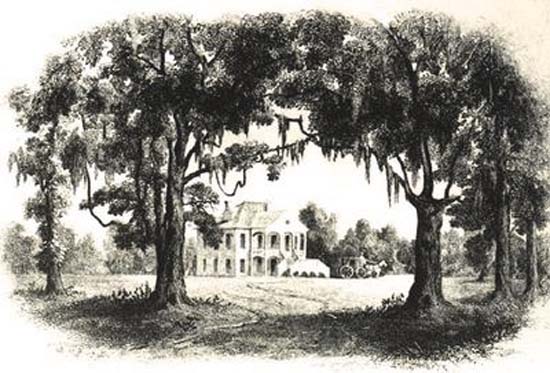
WOODLANDS: PEOPLE AND PLACE
Woodlands Plantation is located in Bamberg County, South Carolina, near the south fork of the Edisto River between Charleston and Columbia.
In the 19th century, Woodlands was the home of William Gilmore Simms, a noted American literary figure, his large family, and an enslaved population of African Americans.
The plantation was actually owned by William Gilmore Simms‘ father-in-law, Nash Roach, a wealthy planter from Charleston. Starting in 1821, Roach began buying property in the Barnwell District. This land would become Woodlands Plantation. By 1830, the Barnwell federal population census shows that Roach owned 23 male and 23 female slaves—46 total—presumably living at Woodlands.
There are three documents recording the purchase or sale of slaves by Nash Roach—people who may have been part of the Woodlands population. On October 27, 1817, Nash Roach bought three slaves,Henry, Lizzie and Sylvia, from Mary Cameron of Charleston. On February 10, 1832, he bought a “negro boy Polydore, son of my woman Branch” for $350 from A.R. Govan, the uncle of Chevillette Eliza Roach Simms (see document below). On July 30, 1839, Roach sold three slaves, Tolbit, Conjdon, and Cynces, to A.R. Govan. These three people had been part of the estate of Roach’s wife that she had inherited from her mother, Louisa Robinson Govan Chevillette.
From 1830 to 1865, there were between 45 and 80 enslaved people at Woodlands. Some traveled back and forth with the Simms family to the house on Smith Street in Charleston where the Simmses lived during the summer. This house was left in the care of a few slaves who may have lived there throughout the year.
At Woodlands, the enslaved people lived in some of the 12 small outbuildings built in a crescent behind the plantation house as well as two parallel rows of 16 cabins, each with a garden, located across the road from the plantation house.
In 1862, Woodlands was burned to the ground but was quickly rebuilt with the help of the friends and neighbors and the enslaved people of Woodlands, many of who were craftsmen and carpenters. In 1865, at the close of the Civil War, the house was burned again. The mystery of this fire remains to this day; was Woodlands set ablaze by Simms’ “beloved coachman,” Isaac Nimmons, as neighbors reported, or did stragglers from Sherman’s army, moving toward Columbia, loot and burn it?
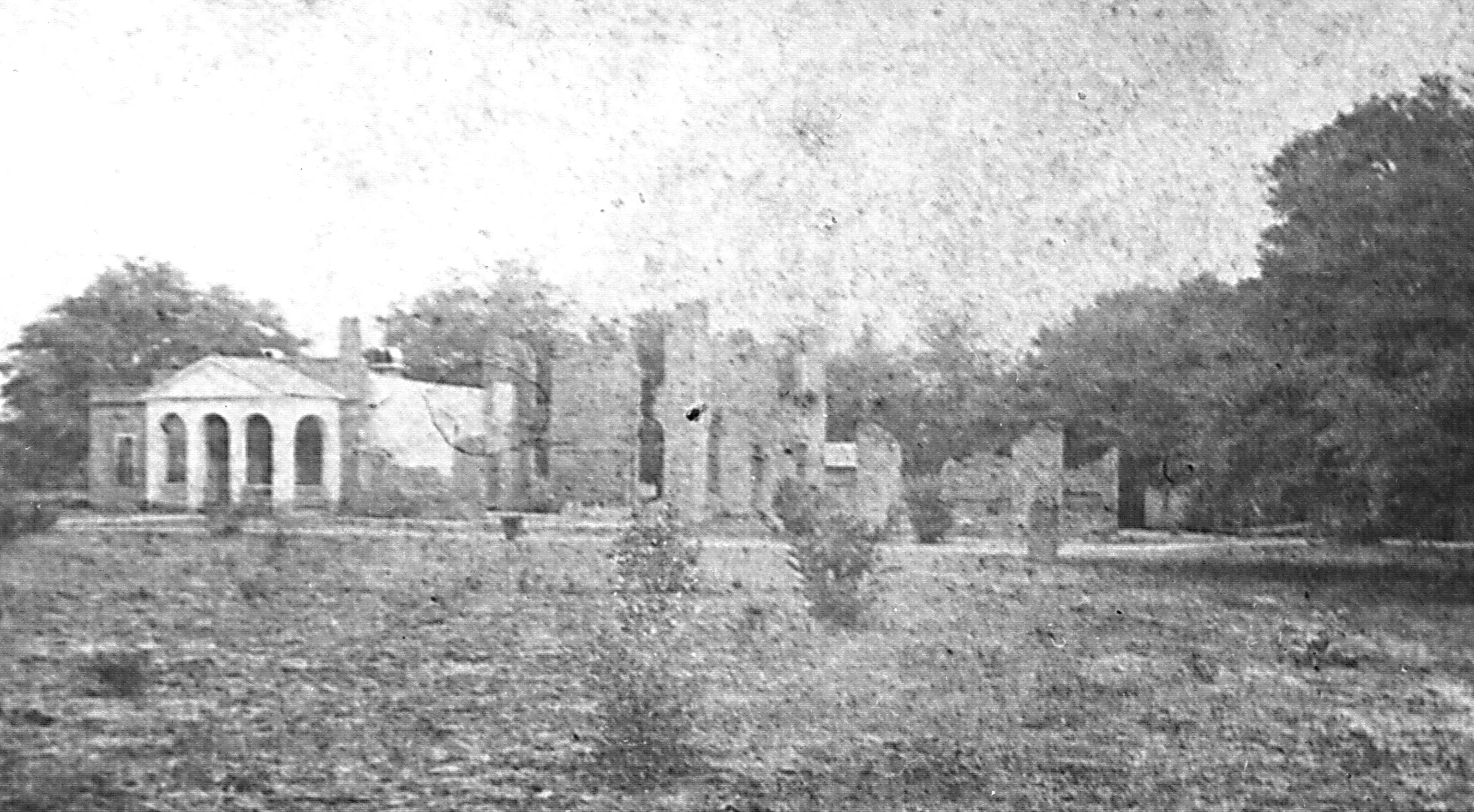
Woodlands after the Civil War
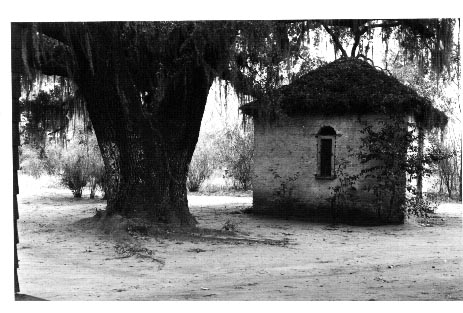
Surviving outbuilding at Woodlands
“Births of Negroes” from Woodlands Plantation Book
45 people at Woodlands who received shoes and cloth, 1846
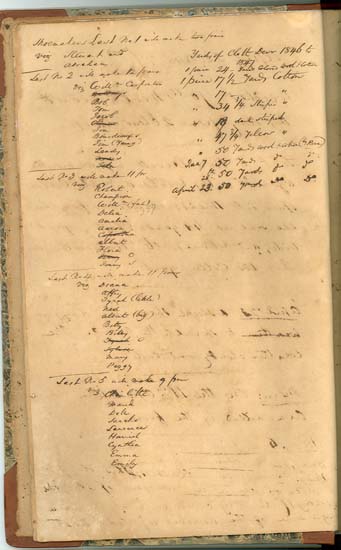
Aaron
Abbey
Abraham
Albert
Albert (big)
Amelia
Antony
Betty
BillyBob
Bourdeau
Cassandra
Champion
Charlotte
Cynthia
Delia
Diana
Doll
Emily
Emma
Flora
Harriet
Jacob
Jenny O.
Jenny S.
Jim
Jim (Young)
John
Landy
Laurence
Maria
Mary
Moses
Ned
Oliver
Peggy
Robert
Sancho
Stewart
Sylvia
Tom
Tyrah (little)
Tyrah O
William Carpenter
Willm. (fat)
Shortly after the war, with the help of some of the remaining former slaves, a four-room house was fashioned from the ruins of the burned structure; the Simms family lived here on and off for a few years. Two of the original outbuildings are still on the property; there are also a few tenant houses built after the Civil War and into the 20th century where some members of the African American families lived into the 1980s.
The last fire at Woodlands destroyed most of the plantation records, except parts of the Woodlands Plantation Book. The book provides sketchy information about the operations of the plantation and the activities of the enslaved population. The book has two sections. The first dates from 1845 to 1851 and appears to have been recorded by Nash Roach. A transcribed copy is published in The Letters of William Gilmore Simms, Volume II, pages 585 – 598. The earlier part of the book provides information about the cultivation of crops including rice, wheat, potatoes, sugar cane, corn, and cotton; the care of livestock; churning butter; making candles; weaving cloth and weather reports. In 1845, Roach wrote that he has 62 “Barnwell Negroes” [at Woodlands] for which he paid tax of 55 cents each. In 1846, Roach provides a list of 45 people who received shoes and cloth. Other than those on this list, he identifies only two other people by name and their specific tasks that day: Isaac, presumably Isaac Nimmons, who tended and sheared sheep, and Antony, who hunted for lost sheep. The second section includes the year 1867 and 1868 then skips to 1874 and contains a section entitled “Births of Negroes,” listing a total of 46 people by first name only but grouped by family or under their mother’s name and sometimes their mother’s and father’s names.
“BIRTHS OF NEGROES” FROM WOODLANDS PLANTATION BOOK
Doll:
George 1842
Jim and Doll:
Caesar 1848
Abbie 1849
Garrick 1851
Glover 1856
Betty:
Eliza 1848
Charlotte:
Golphin 1849
Sarah 1851
Rachel 1853
Caroline 1854
Matilda 1856
Tyrah:
Mary 1849
Emily:
Rose 1852
Susan 1854
Ben 1856
Wesket 1858
George 1850
Harriet 1863
Charles
Lucinda 1862
Cinthia and Albert:
Eugene 1856
Alice 1859
Cinthia:
Martha 1861
Sam 1862
Clarissa:
Jennette 1857
John 1860
Nelson 1862
Diana and Larence:
Centry
Diana
George?
Harriet
Darrell 1858
Eadie 1862
Shortly after the Civil War, James C. Beecher, Sub-Assistant Commissioner of the Bureau of Refugees, Freedmen and Abandoned Lands (and the brother of Harriett Beecher Stowe, the author of Uncle Tom’s Cabin), surveyed conditions at the plantation and recorded the names of the freedmen who were living there at at that time.
According to letters written by William Gilmore Simms, some of the former slaves of Woodlands followed the federal army to Columbia. Others “sailed to Liberia.” Many stayed in the surrounding community, and several families remained at Woodlands, most prominently the Rumphs, Rowes, and Laboards.
After the Civil War, the Simms family tried to farm the property but had little success. In 1883, William Gilmore Simms, Jr. becamse Clerk of Court for Barnwell County and Jim Rumph, formerly a slave at Woodlands became the on-site manager of the property. At the end of the 19th century, Woodlands was rented to the Hunter family. It was not until 1925 that members of the Simms family lived at Woodlands again to try their hand at farming but—once more—were not successful; however, they did build a wood-shingle second story onto the house, which completed the house as it is seen today.
In 1917, this Jim Rumph bought the land he had been living on from the Simms family, which had been part of the old plantation tract. Prior to buying this land, he sharecropped for J. D. Copeland, a cousin of the Simmes. After Jim Rumph died in 1922, his son, also named Jim Rumph, took over as manager. In 1930, Woodlands was rented to the Ridge family as a hunting retreat, but it continued to be cared for by Jim Rumph. In 1940 the Simmses reclaimed Woodlands. Jim Rumph’s grandson, who like his father was also named Jim Rumph, continued as manager of the property.
In the 1930s, members of the Rowe and Laboard families worked on shares or as tenants at Woodlands and at other ante-bellum plantations in the community and continued to maintain contact with the Simms family.
In 1952, Mary C. Simms Oliphant wrote, as part of the introduction to the published letters of William Gilmore Simms, a section entitled “The Negroes of Woodlands.” She states that there were “16 house and yard Negroes.” Those especially noted were Isaac Nimmons, coachman of Woodlands; Edmund [Laboard], the butler; Maum Abbey, Mrs. Simms’ personal maid; Isom Glover, the torch tender; and Cinthia Curry, the head cook. Jim Rumph is described as a “general factotum” who “held a high place at Woodlands with both blacks and whites, as did his son Jim….” Maum Sallie [Laboard] was the head nurse. At the end of this section, referring to the contemporary Woodlands families, she wrote, “Woodlands is their home, and they are a part of the very fibre of the place.”
At the time Mrs. Oliphant wrote this passage, many of the descendants of the people she identified had moved north to York, Pennsylvania; Brooklyn; and New Jersey. But many of these descendants chose to remain in Bamberg County and served as community, business, and church leaders. Many families still bury in the plantation cemetery, which was deeded to the Woodlands Families Cemetery Association in 2001.
Contemporary members of the Simms family now use the property for hunting parties, family retreats, and community events, joining with the descendants of the enslaved families in family reunions and special occasions.Members of these families and others with information about those associated with this plantation or about the property itself are invited to submit remembrances, stories, oral histories, genealogical materials, and historical data as well as photographs and film and video recordings for inclusion in this site. To submit information or general comments, contact Felicia Furman at ffurman@ecentral.com.

